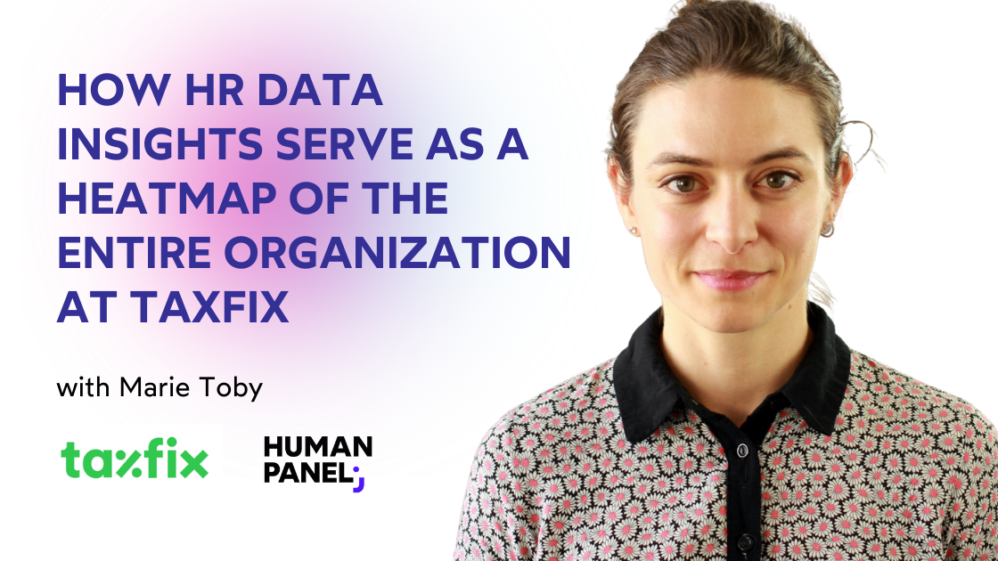How Merixstudio uses HR data to drive business value
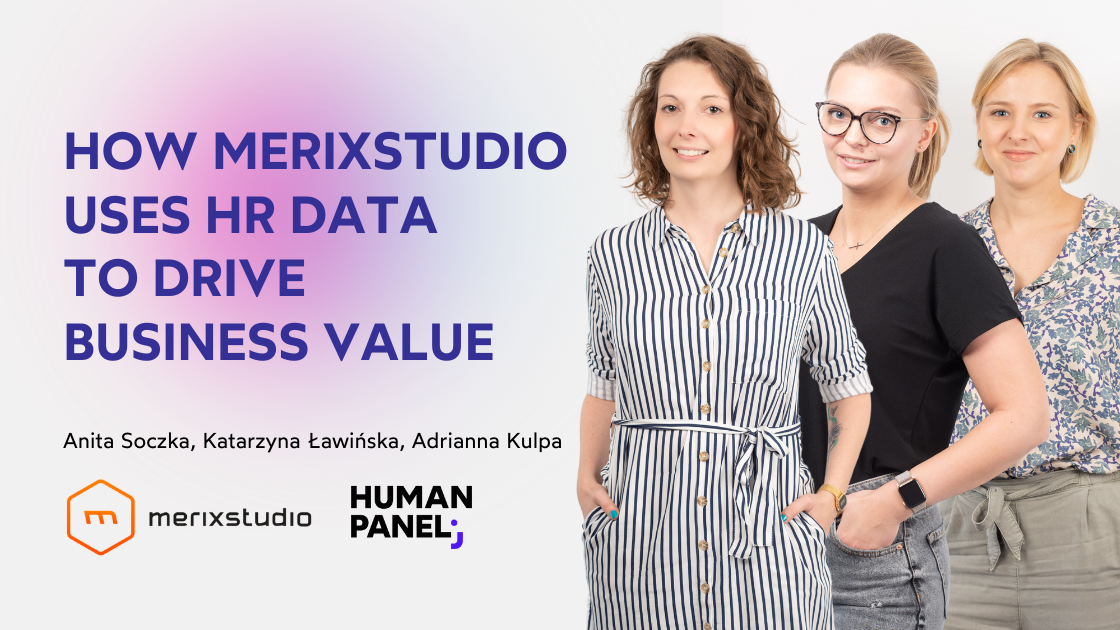
What is the value of HR ‘s data to the business? We talk to Katarzyna Ławińska, Adrianna Kulpa and Anita Soczka from Merixstudio.
Most companies would like to be data-driven. And so would most HR departments. However, the challenge is to do it wisely and in a way that brings tangible results.
Merixstudio – a software company that currently employs more than 200 people – seems to know the secret. The HR team has been working with data for quite some time and now knows all the rookie mistakes.
What are they and how to avoid them? What’s crucial in collecting HR data? We talk to Anita Soczka, the Head of People and Culture, Adrianna Kulpa – People Operations Manager and Katarzyna Ławińska – Talent Acquisition Manager.
Human Panel: What does HR data analytics mean for you at Merixstudio?
Adrianna Kulpa:
As a HR team, we intend to treat all our employees individually from day one. We put a lot of emphasis on individualization of work, but at the same time we are aware that data helps us to optimize our work. It shows the priority areas in the organization and points out any “hotspots.”
Thanks to the data, we can identify the emerging needs of the organization while maintaining the individualized approach to employees.
Adrianna Kulpa
Katarzyna Ławińska:
Data helps us get off the beaten path, which can be very valuable in business discussions with executives. We humans often think that what is known is always best, and data can shed new light on many issues. You’ll have to step out of your comfort zone to do so, but the payoff is undeniable.
Anita Soczka:
To summarize what Adrianna and Katarzyna just said, I would add: Data gives us the opportunity to make conscious decisions based on facts, not assumptions.
Why did you start working with HR analytics?
Katarzyna Ławińska:
The main reason was the rapid growth of our organization, which showed us the need to work with data.
Adrianna Kulpa:
Scaling was critical because it changed the way we work with data. It made us re-evaluate our data-gathering system and realize that we really wanted to make the most of it.
And what was the first area you tackled?
Katarzyna Ławińska:
Recruitment – which may seem obvious at first glance. Most companies start HR analytics in talent acquisition teams and use ATS as a first step. At Merixstudio, we are past that point because the data that guided us a year ago is no longer enough. We seem to know what we do not know – and where we need to add new data points.
The most basic HR metrics, for example, are:
- the quality of the recruitment funnel
- source of candidate
- response rate
- time to hire
However, we are already seeing the need to integrate this information with other data points: How does quality of hire affect engagement? What is the correlation between the different metrics? What skills do we need to make a project successful? These are the questions we would like to have an answer to.
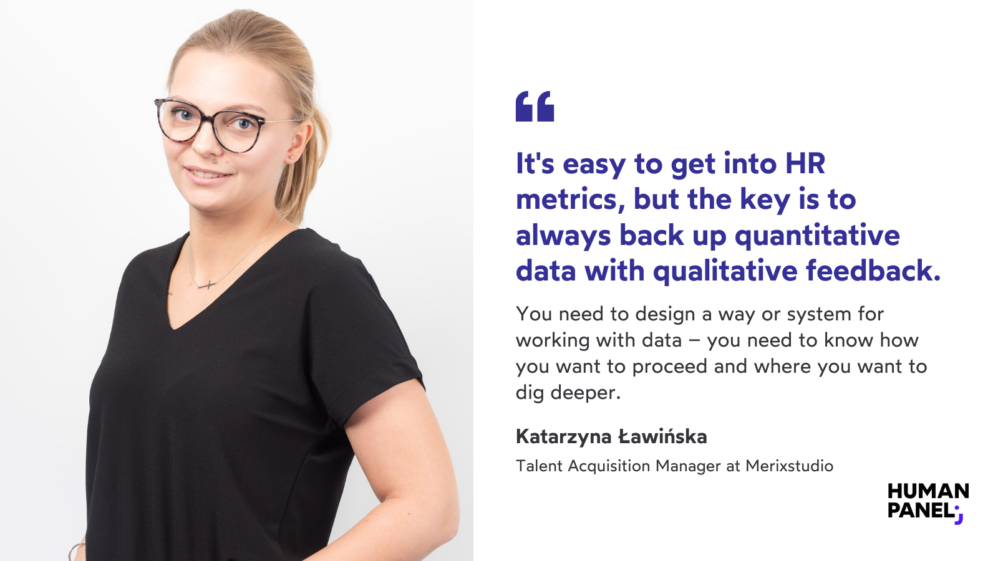
What were other challenges that you have encountered along the way?
Anita Soczka:
When we started working with data, we made a typical rookie mistake: we knew what we wanted to measure, but we did not know why. We had a list of HR metrics that did not make much sense.
Looking at individual metrics does not give you much insight. First you need to know your goal and then you can decide how to achieve it.
Anita Soczka
Katarzyna Ławińska:
Benchmarking is also a challenge. Single data point does not give a complete picture, you also need to follow market trends and compare your results with those of your competitors.
Adrianna Kulpa:
For me, it’s critical to realize that you can actually have measurable goals in HR. This applies to all areas of HR, including “soft” ones like employee satisfaction, leadership support, up-skilling, or skill mapping. Currently at Merixstudio we are creating a skills map to know what skills we have, how we can develop them and where we need to invest.
We are in the process of creating a people analytics area which goal will be to assign metrics to each HR initiative.
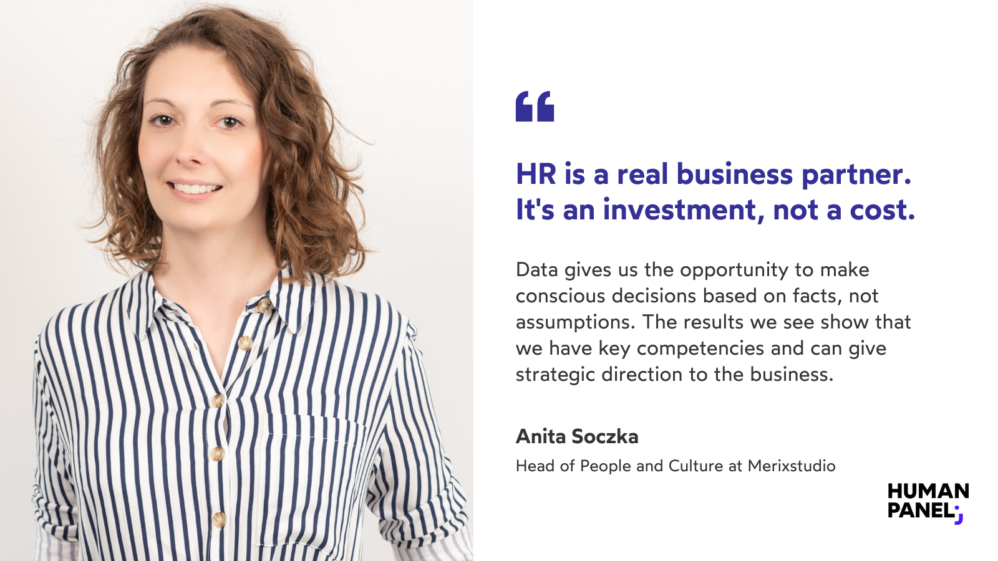
What tactics are you using at Merixstudio – push or pull? Is measurable HR a push coming from the top, or is it more of a pull up from the HR department?
Anita Soczka:
In both directions! We are pushing for more analytical HR, while there are of course questions from the C-level about specific data points.
Adrianna Kulpa:
To be honest, we are already a data-driven company and there is a very broad data awareness. I would say that today the demand is greater than the supply – all departments want to work with data.
Let us talk about the tangible results you have seen working with data in HR. What specific projects have given you valuable insights?
Adrianna Kulpa:
Almost every HR process we have developed has been driven by very specific needs, and every survey or study we do leads to change. That’s because we do not just collect data – we take ownership of the results and are willing to intervene surgically.
For example, we meticulously examine the results of our onboarding survey and constantly adjust the process. Most of our surveys are not anonymous, so it’s easier to make very granular changes when needed.
We also conduct the eNPS survey after every project. It has led us to make changes to 6 of them, including a correction to compensation. We also terminated work with several clients whose projects proved unattractive to our staff. This was not an easy business decision, but it resulted directly from the eNPS study.
Katarzyna Ławińska:
As far as recruitment is concerned, we highly value the feedback from our new employees after recruitment. In 2020, the average satisfaction level was 87%. You might say: what a great result! But we thought: Okay, what can we do to get it to 100%? We started analyzing the data and came to several conclusions. For example, in some cases the process was too long or too short, or candidates felt that their competencies were not thoroughly tested. The changes we made have resulted in a 95% satisfaction rate in 2021.
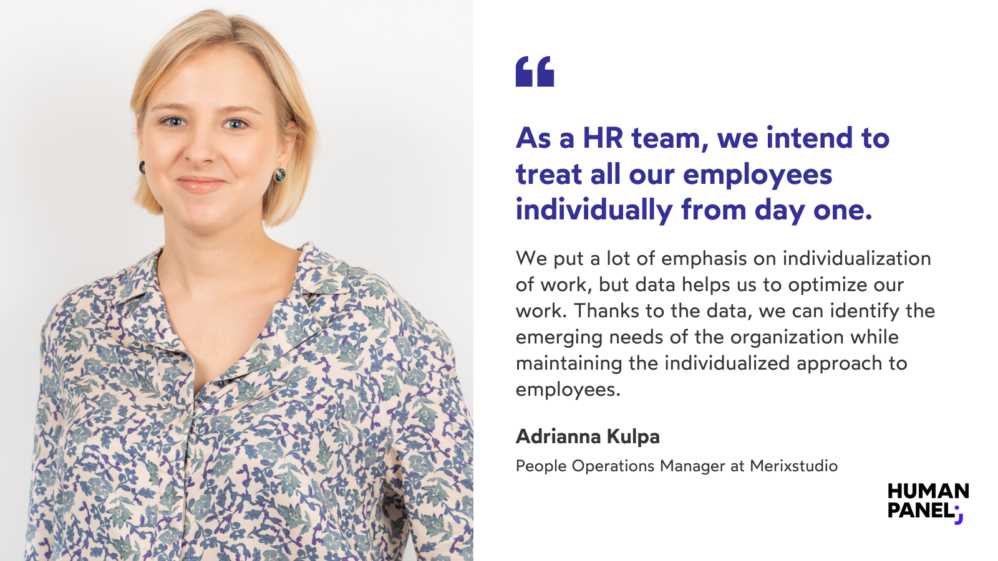
Adrianna Kulpa:
It’s hard work to collect “grain by grain,” but you can get better results by carefully examining what’s behind the numbers you collect. That’s why you always need both qualitative and quantitative data to get the full picture.
Sometimes you can make ad hoc changes – give someone access to a new tool, switch desks, or shorten a meeting. But sometimes you need to redesign the entire process and make profound changes to the structure or even the culture of the organization.
What would you call the biggest challenge when working with data in HR?
Katarzyna Ławińska:
It’s easy to get into HR metrics, but the key is to always back up quantitative data with more qualitative feedback. You need to design a way or system for working with data – you need to know how you want to proceed and where you want to dig deeper.
On a related note, it’s worth noting that your style will change as the company grows. In a small company, HR usually works very closely with people, but the larger the company, the more it works with data. This moment of transition is very important and should be well prepared to avoid chaos and an abrupt change from managing people to managing data about them.
Do you measure your employer branding efforts?
Katarzyna Ławińska:
Measuring employer branding can be tricky because on the one hand you can measure many things – clicks, conversion, click-through rate – but that does not mean you have to measure everything!
With employer branding, as with any other project, you have to ask yourself: What do we want to achieve? What is our goal? And only then use the right metrics to measure it, because each goal determines the actions you take to achieve it.
Katarzyna Ławińska
Adrianna Kulpa:
The key thing is that you only consider the metrics that really matter. Is that particular metric needed to make a particular decision, or is it just an empty metric? For example, if 80% of our employees know that we are doing a charity event – good for us, but what matters more is how many of them will get involved and what they think about it.
What would you say is the greatest value of using data in HR?
Adrianna Kulpa:
I feel that the data we collect actually influences business decisions. For example, a study we do causes us to change a process or stop a project. We have a real impact and influence here.
Anita Soczka:
HR is a real business partner. It’s an investment, not a cost. It counts, and our voice is heard. That is one of our biggest successes. The results we see show that we have key competencies and can give strategic direction to the business.




